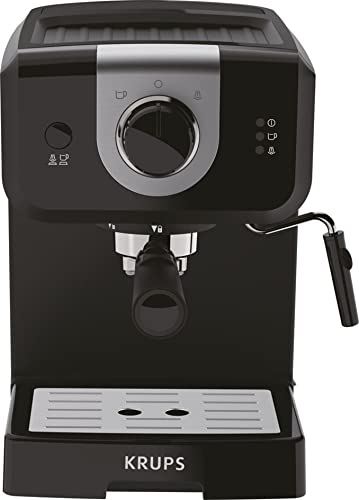How Does Machine Espresso Work?
The machine espresso makes use of precision pressure, and filter technology that is awe-inspiring to make the coffee you enjoy. But how exactly does it work?
In decent espresso machine to make espresso hot water is forced under high pressure through finely ground coffee. The process is similar to making drip coffee. However the pressure is the major difference.
The Group Head
As the name implies, the group head is the place you insert your portafilter when brewing espresso. It disperses the water into the portafilter, and controls the pressure of the extraction. There are many different kinds of group head, each with their unique advantages and disadvantages. Some are focused on temperature stability, while others on pre-infusion options, and others are designed to control the lever. There are some that contain a variety of features, like the E61, which is considered the most popular choice among baristas due to its ability to offer multiple benefits in one package.
As you can see in the picture above the head of the group is equipped with several notches. The portafilter is placed in these notches, then twist the head to lock it. There is also a gasket made from rubber which is located inside the notches and helps to create an airtight seal after inserting your portafilter into the machine. The notches on the head permit a precise positioning of the portafilter which is crucial for an efficient extraction.
The group head not only allows the portafilter to be inserted easily however it also keeps a constant temperature. It does this by circulating hot water through the brew basket, and around the portafilter, ensuring that it is always at the correct temperature to extract. This is vital, because just a few degrees could mean the difference between good and great espresso.
The Pump
The motorized pumps used in rotary espresso machines supply the nine atmospheric bar pressure needed for espresso extraction. This is different from manual piston machines that rely on a lever. The pressure is created by drawing tap water from a reservoir, and pumping it through a heat exchanger prior it is shot through the ground coffee inside the group head.
Pumps are typically less expensive than piston-driven machines and tend to last longer. However, both types of machines could degrade with overuse and insufficient cleaning. They also make mechanically complex which can result in an expensive price for even the most basic models.
Some espresso machines can eliminate the pump completely and utilize steam pressure to make espresso. This could lead to over-extraction since the boiler that makes steam also warms the water to boil. The machines must also constantly rebuild their pressure in between cups. This requires energy and time.
A majority of espresso machines utilize the rotary or vibration pump. A vibration model utilizes the vibrating disk to create pressure, whereas a rotary model pushes hot water through the ground at a fast speed. Both types of machines are capable of producing excellent espresso, however the rotary pumps are quieter, and more durable than vibration pumps.
The Boiler

The boiler is used to heat the water to the right temperature for extraction. The steam that is produced reaches the portafilter which holds the ground espresso coffee and is then funneled down into the cup. During this process, steam creates pressure to push through the coffee grounds. This results in a layer of crema on top. This is a hallmark of a great espresso.
There are three kinds of espresso makers. They differ in the type of pump they use and the degree of heat that the brew is. There are various ways to control the brew as well as the size of the cup that can be produced by the machine.
The first espresso machines were steam-types. The earliest espresso machines were steam-type machines. This led to the coffee tasting bitter and burnt. The modern espresso machine was designed by the Milanese producers Luigi Bezzerra & Desiderio Pavoni.
The most commonly used espresso maker is a semi-automatic one that has an electric pump. These are the images people have when they imagine an espresso machine. If you have a semi-automatic machine you grind the beans and then tamp them by hand. However, the pump controls the flow of water and pressure. This is a fantastic combination of human control and mechanized reliability.
The Filter
Typically, espresso machines utilize filters that separate the grounds of the coffee as they go through the hot water. The filter is also a vital part of the temperature control system as it prevents the machine from overheating.
Filters also aid in flavor since it allows for a longer flowering period. This allows the beans to release their nuances and gives an opportunity for better extraction.
It is important to remember that even the finest filter can make a bad cup of coffee. The quality of the beans and the extraction, are still crucial.
It's in this area that the magic takes place. This is the reason why espresso tastes so good. The grouphead (also known as the brewhead) is where you place the portafilter - the thingy used to place the grounds of coffee into when making espresso.
Steam-driven espresso machines use hot water heated in an airtight container to produce steam. The steam then moves hot water through the coffee grounds under high pressure. They are less expensive and are easier for the user to maintain than pumps-driven models. They are however limited to create the perfect brewing conditions as they only operate with 1-1.5 bar of pressure. The ideal shot requires 9-10 bars.
In recent times, espresso machines powered by compressed air-pump are becoming increasingly popular. They make use of an air compressor to force hot water through the ground and are more mobile than electric steam-driven espresso machines.
